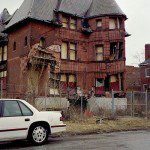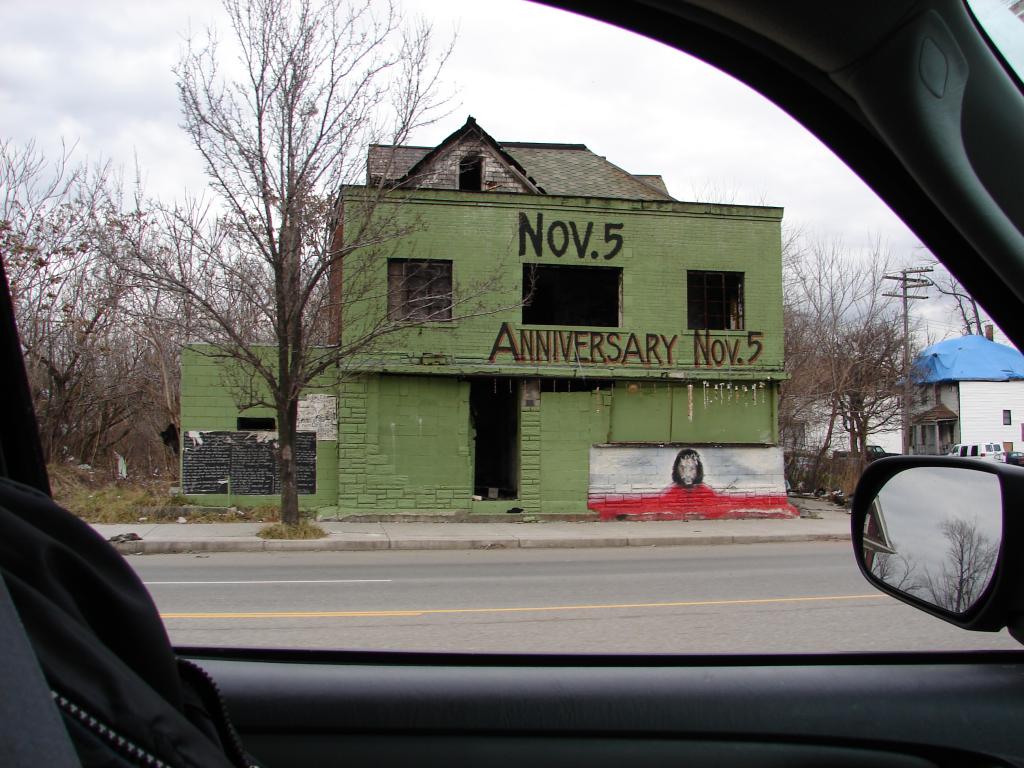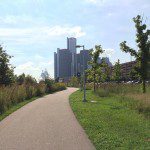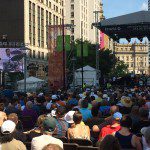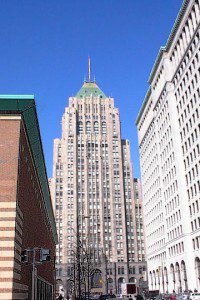
Everyone’s oohing and aaahing about the claimed revival of Detroit, as epitomized by the new Whole Foods in the “midtown” area. (“Midtown” seems, by the way, to be a rebranding of what had know to be the New Center area; I suppose to market the area to outsiders for whom “midtown” is a familiar sort of way to name a part of town, but New Center is just too local to Detroit.) Here’s Salon, from 2012, announcing that Whole Foods’ entry to Detroit heralded better times ahead, or this enthusiasm from the Chicago Tribune, as a preface to an article over a plan to build a Whole Foods in a poor part of Chicago:
The skeptics didn’t think a Whole Foods could ever work in Detroit. They also didn’t think a Whole Foods could deliver change to a city plagued by poverty, blight, crime and unemployment.
Yet in the 11/2 years since the market opened, the aisles have been packed. Some residents say that a store known for its high prices and pretentious food options has brought small but real change to Detroit, delivering jobs to residents and new food alternatives.
So, as it happens, we were in that Whole Foods today. Bought some cough drops before heading across the street to the symphony (the DSO is a great deal: $25 per seat and $7 for parking, and we, spring-breaking-kids in tow, attended a matinee concert). Was it full of locals filling their pantries? Not so much; people seemed as much to be picking up their lunch or other single-serve items.
And the area? On the one hand, yes, there did seem to be some new construction, a few businesses and apartment buildings along Woodward or along the side streets. But this is the New Center area with the major hospitals, Wayne State University and Detroit extensions of both Michigan State and the University of Michigan, government offices, museums, the Fisher Theatre (for Broadway and Broadway-style touring shows) and other theaters, etc. If there’s to be any up-and-coming area of Detroit, this is it.
But drive just a short distance further, and it’s a different story: just north is the Boston-Edison historical district. And just north of there: abandoned homes, burned-out houses, vacant lots where these houses used to stand. And many of these were, you can tell, once nice homes.
We drove north on Second Street all the way up, until we jogged over a bit for the Palmer Woods neighborhood, one of the very few remaining areas in good condition, with well-maintained attractive houses, patrolled, of course, by private security. And then another jog over: we were at Seven Mile Road, an area which I would have expected to be in better shape, being close to the city limit — but it was just as bad. Perhaps, if anything, the city had been more diligent about demolition here, as there were lots of vacant lots. But then just a couple blocks south of the city limit, four burned-out houses in a single block.
What, we wondered, did things look like just on the other side of the city limit, in Hazel Park? Was it just as bad? No, not at all. Small homes — smaller, in fact, than those to the south. But all well-kept.
That’s the extent of my report. We had hoped to walk around the fabled reviving area, but it was 27 degrees and snowing. I would have taken pictures, but, well, I’m not going to get out of the car in some such neighborhood and advertise, “Hey, everyone, we’re taking pictures of your block!” But you can take a look yourself, by following Second Street from the Fisher Theater northwards to McNichols, and then Derby from State Fair Ave. to 8 Mile Road, on Google Streetview.
Is Detroit improving? And, to the extent that it is, is this sustainable, or the effect of generous state and federal money?
Yes, I’m skeptical. It comes from having witnessed decades, now, of claims that the city is undergoing a rebirth — our very own equivalent of the way Africa is euphemistically called “the developing world” even though it never seems to actually “develop.”
UPDATE: I’m told, via twitter, that “midtown” refers to the area south of the New Center; it’s the former Cass Corridor. Which is actually encouraging, since “Cass Corridor” used to be the shorthand way of referring to “area of Detroit with druggies.”
You know, in a different context, I could so much be a Detroit booster, plucking articles about this or that new construction, or the Quicken Loans guy being a one-man downtown revitalization program. And the downtown area did look cute when we drove through on our way back from John King Books. (See my post from last Thanksgiving or this from two years ago.) But there have simply been too many times when they’ve pronounced “Detroit is on its way back now” — going all the way back to the Renaissance Center itself. It’s like GM: for quite some time we owned GM stock, and each year’s annual report trumpeted the ways in which it had turned the corner. Which means that it’s really hard to believe that this time, it’s for real — especially when the city is still following the same playbook of big construction projects ( now the streetcar and the hockey arena) that they’ve pursued since the 70s.



